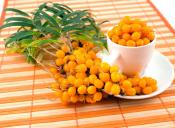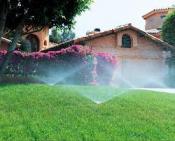Search
Login
Recommended
Poinsettia at home, how to plant, how to care for poinsettia
The amazingly beautiful plant that we call the Christmas Star has a very long and mysterious history. In fact, it became a Christmas star only some hundred years ago, when its cut branches began to be sold for the holiday in stores located on the famous Sunset Boulevard in Hollywood. Wealthy citizens happily bought it to decorate the festive table for Christmas. But long before that, the beauty of the plant brought to Europe was appreciated by the ministers of the church and used it as a decoration for the winter holidays (active flowering of the plant begins in this period). Poinsettia, as the Christmas star is actually called, according to legend was the favorite plant of the Indian leader Montezuma. A beautiful ancient legend says that a flower appeared from drops of blood that fell to the ground from the heart of an Indian goddess broken by love. Another name for the plant, Euphorbia pulcherrima - euphorbia, the most beautiful of euphorbia, was given by poisettia Karl Vilenov, director of the Botanical Garden, located in Berlin. It is under this name that the plant is listed in modern botanical reference books.
Content:
- On the diversity of plants of the genus Euphorbia video
- Poinsettia - why is it attractive?
- When buying a blooming poinsettia, pay attention to the condition of the flowers
- Types of Poinsettia
- Poinsettia plant care and its features video
- How to transplant a plant
- How to propagate poinsettia
- Diseases and Pests video
On the diversity of plants of the genus Euphorbia
The milkweed genus includes about 2,000 completely dissimilar species.

This genus is so vast and diverse that with careful study it is possible to find both annual and biennial and perennial plants included in it, with falling leaves and keeping it green for the entire life span. In addition, succulents, shrubs and trees belong to this genus, the natural growth of which occurs in completely dissimilar habitats.
There are also common features of the genus, combining multifaceted diversity: inflorescence in the form of a false umbrella and secreted milky juice, the effect of which is irritating to the skin, which almost everyone knows.
Most species from the euphorbia family grow in the garden.

A smaller part of these representatives - refers to domestic plants. The most famous and brightest view is euphorbia or Euphorbi apulcherrima, or the poinsettia is the most beautiful. Its characteristic difference from other representatives is a special inflorescence with an environment of red bracts.

Inflorescences are located at the very tops of the branches, surrounded by pretty yellow-cream flowers.
About how attractive the plant is and its characteristics can be found in the video:
Poinsettia - why is it attractive?
A special aesthetic appearance is given to the plant by not ordinary-looking, small and pale flowers, but by bright, eye-catching bracts of white, pink or red color.

Quite often, this species is called a Christmas star. This is due to the flowering period, which occurs between December and February. The custom of decorating a Christmas table with such a flower has arisen for a long time, but has not lost its relevance to this day.

Poinsettia can remain in a state of active flowering since the arrival of winter, this period can last up to six months. The plant is quite popular in the USA and Japan.
When buying a blooming poinsettia, pay attention to the condition of the flowers
Poinsettia is so attractive in appearance that quite often those who want to buy it by debt cannot make a choice. When buying, it is worth focusing on the condition of small yellowish flowers located above the bracts. They should be in the bud stage. This factor will serve as an indisputable proof that this plant will delight you with its original, bright appearance for a sufficiently long period of time.

The life cycle of poinsettia consists of three stages:
- active flowering in the cold season,
- after - a period of rest and rest,
- then the growth period.
Types of Poinsettia

Mainly on sale are widely represented varieties of milk of the most beautiful, having multi-colored bicolor bracts:
- pink
- red
- apricot
- white.
Poinsettia - plant care and its features
Regarding light preferences, poinsettia does not like direct sunlight. Ideal for her would be quite bright, but diffused light. In the summer, poinsettia must be placed in the sun, but be sure to arrange for it a canopy that will provide protection from direct sunlight.

With the existing opportunity, in the summer, poinsettia should be placed outdoors. It can be either an apartment balcony or a garden on a personal plot. Both in the garden and on the balcony, without fail, there must be a canopy that protects from direct sunlight, and from rain, and from drafts.
In cases when in summer there is no possibility of moving the plant to open air, the room in which it is located should be regularly ventilated.
You can find out about the features of poinsettia care when watching a video:
poinsettia - we provoke flowering plants with a certain light mode
In order for the poinsettia to bloom for the New Year, it is necessary to maintain the correct lighting mode. Starting from the last days of September, with the arrival of twilight, the plant should be covered with a dense, light-tight dark plastic bag. With such a cap, it should remain until the morning. Instead of putting on a bag, you can move the plant to a dark place.
Poinsettia should be in complete darkness for about 12-14 hours a day. Such forced dimming should be carried out for 8 weeks. After the expiration of the term, you can return the plant to normal light mode. Longer lighting, both natural and artificial, inhibits the formation of buds and provokes more active growth of foliage.
A few weeks later, after forced monitoring of daylight hours, the plant will form flower buds.
You can learn more about how to provoke a flowering plant from the video:
optimal cultivation temperature
Regarding the optimal temperature regime for the plant, it is worth focusing the attention of the owners on the period of winter flowering. It is at this time that the plant will be as comfortable as possible at a temperature ranging from 14 to 16 degrees above zero. During the rest period, the plant will have enough temperature of +12 +14 degrees. The rest of the year, a temperature of 18 to 25 degrees will be quite acceptable for the normal course of plant life.
poinsettia - we water the plants correctly
Experts recommend watering poinsettia abundantly, but only after the soil dries. Without delay, it is worth watering in cases when the leaves begin to fade. In the summer, watering is worth increasing.

The resting period for the plant is quite pronounced. The beginning of this period falls on the shedding of bracts. The period itself lasts approximately 2 months. It was at this time that watering should be reduced, but at the same time not to allow drying of the soil.
how to care for poinsettia
For the normal functioning of poinsettia, increased humidity is required. During the flowering period of poinsettia, its foliage must be constantly sprayed with settled and slightly warm water. It is also recommended to place a flowerpot with a flower on a pallet with peat or wet expanded clay.
In the period from spring to autumn, the plant requires special attention, which should be expressed in the complete fertilizing with mineral fertilizers. Top dressing should be done every 2 weeks.

With the advent of spring, the plant should be pruned. The remaining stems should be approximately 10 cm from the soil. In the subsequent period, it is also worth trimming, which will maintain the desired shape of the crown.
How to transplant a plant
A poinsettia transplant is done every year in the spring, approximately in late April - early May. In March, 1/3 of the stem is cut so that 3-4 strong buds remain on the stem. Then poinsettia is placed on the windowsill in a warm room on the sunny side. Watering is done with slightly warm water. When leaves appear, poinsettia can be transplanted into a pot in size slightly larger than the previous one.

The soil in the pot should be with a slightly acidic pH. Such soil can be made independently by taking turf clay, foliage, peat soil and sand in proportions of 3: 2: 1: 1. It is also necessary to take care of good drainage. After transplanting, a flowerpot with a flower is placed in a room with a constant temperature of about 20 degrees, watered abundantly and sprayed. After a certain time, the bush will give new shoots. 4-5 of them (the strongest) are left, and the rest are removed. Cut shoots are used as cuttings for propagation.
How to propagate poinsettia
The most suitable period for reproduction is spring. Make it with the help of apical cuttings. The cutting handle must have a minimum of 5 internodes.

Slices of the cuttings secrete milky juice (latex), which is easily removed with blotting paper. Slices of cuttings showered with fine charcoal. In cases where latex excretion does not stop, the stalk is dipped in cold water for a short time, and then charcoal is again shed. This procedure will protect the cuttings from the process of decay. It must be performed without fail, since the unstoppable process of isolating milky juice contributes to blockage of blood vessels, thereby hindering the healing process of the slice.
In addition, an infection can get into the clogged section and subsequently lead to the death of the plant.
Rooting cuttings can be produced in water or in a moist substrate: sand and peat mixed in equal proportions.

For better and faster rooting, heteroauxin (growth stimulator) is used. The average temperature in the room where the rooting of the cuttings take place should be from 25 to 29 degrees. In this case, the cuttings should be constantly sprayed, and the container with them should be aired. After about a month, you can observe the appearance of roots. Now you can plant the cuttings in small flowerpots.

A plant grown from cuttings is periodically pruned. This contributes to the branching of the crown.
Diseases and Pests
The plant can get the most harm from worms, which contribute to the formation of honey dew on the leaves.

Excessive moisture in the soil, or vice versa, excessive dryness can lead to decay or decay of the deciduous cover, therefore, if leaves fall on a poinsettia plant, you will first need to pay special attention to the irrigation regimen and the amount of liquid applied.
Foliage may crumble without wilting. Such a factor will signal a draft on which the flower is located, or a low ambient temperature. Also, leaves may fall off from insufficient lighting.
At too high a temperature and insufficient air humidity, one should expect falling of inflorescences and yellowing of the foliage edges.

Drying of the leaves or discoloration, as well as the complete death of the plant, may indicate damage caused by the spider mite.
The lower leaves of the flower may suffer from gray rot. If such problems are found, the leaves should be removed immediately, and the entire plant should be treated with a solution of a special antifungal drug.

The red spider mite causes withering, and then decay of the deciduous cover. The main reason for its appearance is excessively moist soil.
Once again, the following video will tell about proper care and plant diseases:
It does not matter whether poinsettia was bought in a specialty store or grown independently, it will in any case be an object of admiration for the Christmas holidays.

It is during the flowering period that it should be placed in a conspicuous place and at the same time do not forget to place a beautiful original flower pot.





